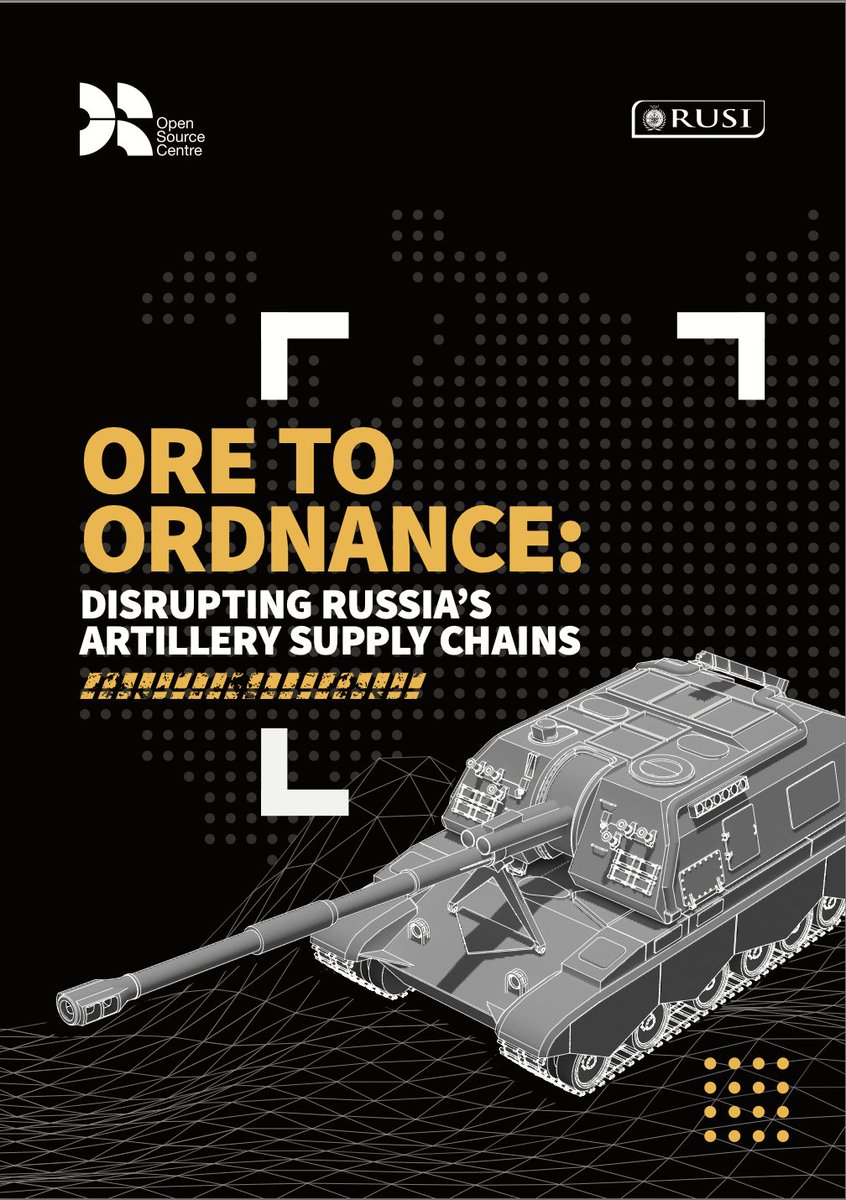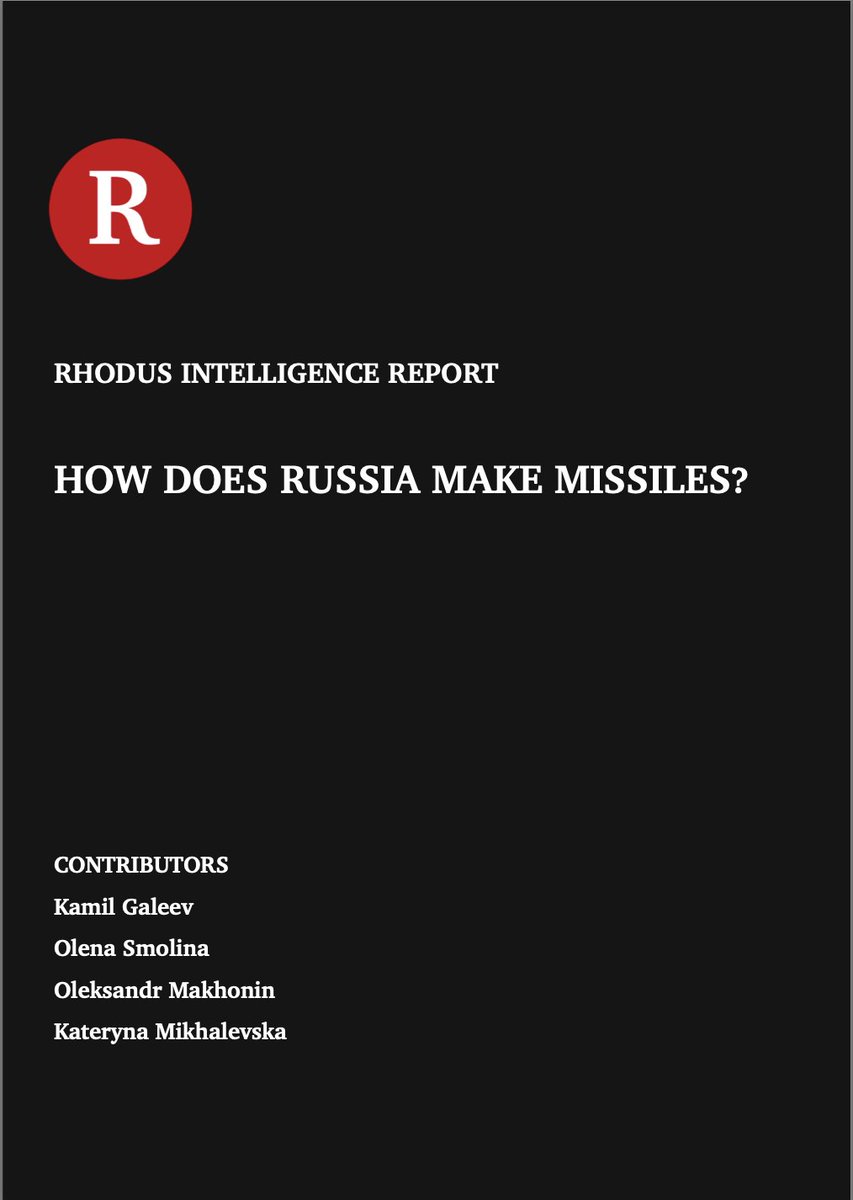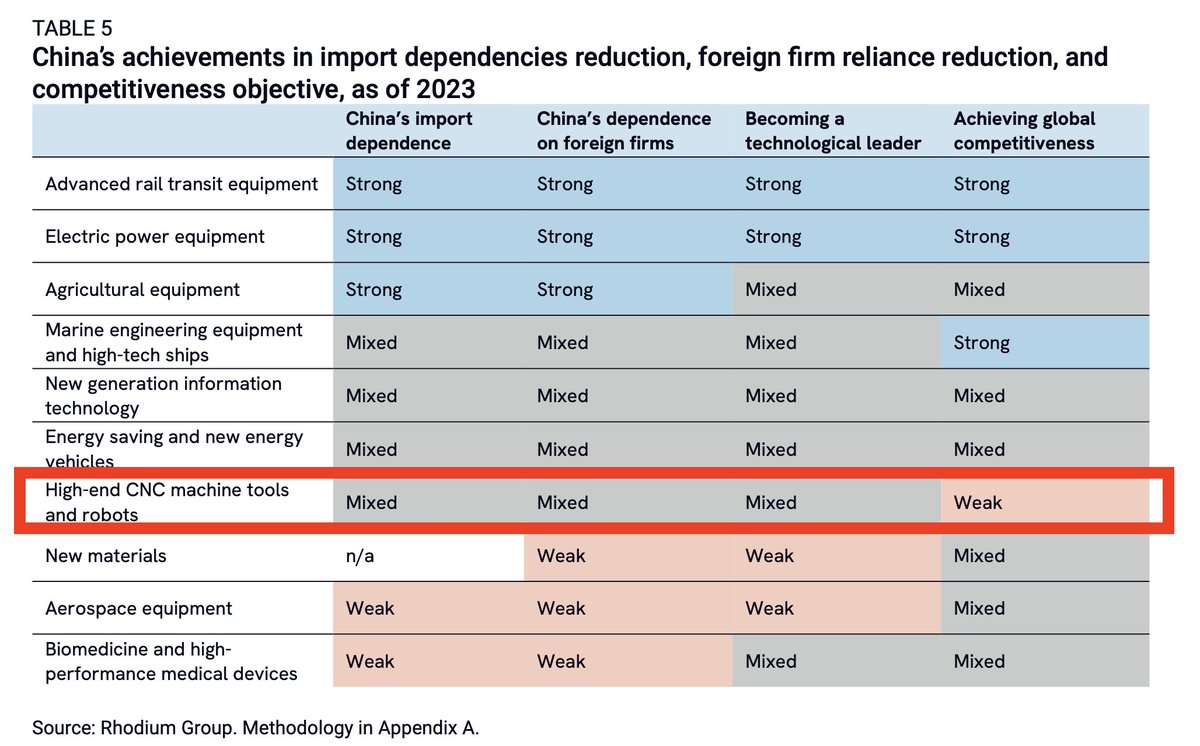I finally managed to read this report by RUSI and OSC on Russian artillery production. Very strongly recommended.
static.opensourcecentre.org/assets/osc_ore…
static.opensourcecentre.org/assets/osc_ore…

Among the many interesting details provided is this golden nugget, which supports existing understandings of the current limitations of Chinese machine tools. 

A limitations already described in this very important report by Rhodus on Russian missiles.
cdn.prod.website-files.com/65ca3387040186…
cdn.prod.website-files.com/65ca3387040186…

The topic has also received attention in two articles in the FT, one is here:
ft.com/content/ccaae6…
ft.com/content/ccaae6…
As well as from this report by Rhodium (different from Rhodus mentioned above) on whether China has achieved the goals of China 2025.
rhg.com/research/was-m…
rhg.com/research/was-m…

@UnrollHelper
• • •
Missing some Tweet in this thread? You can try to
force a refresh








